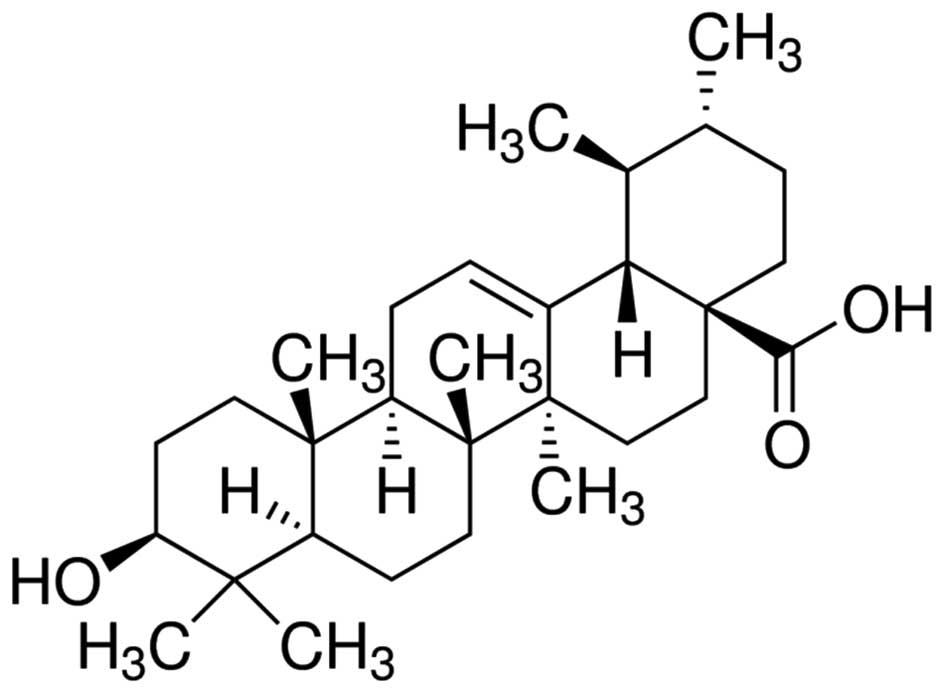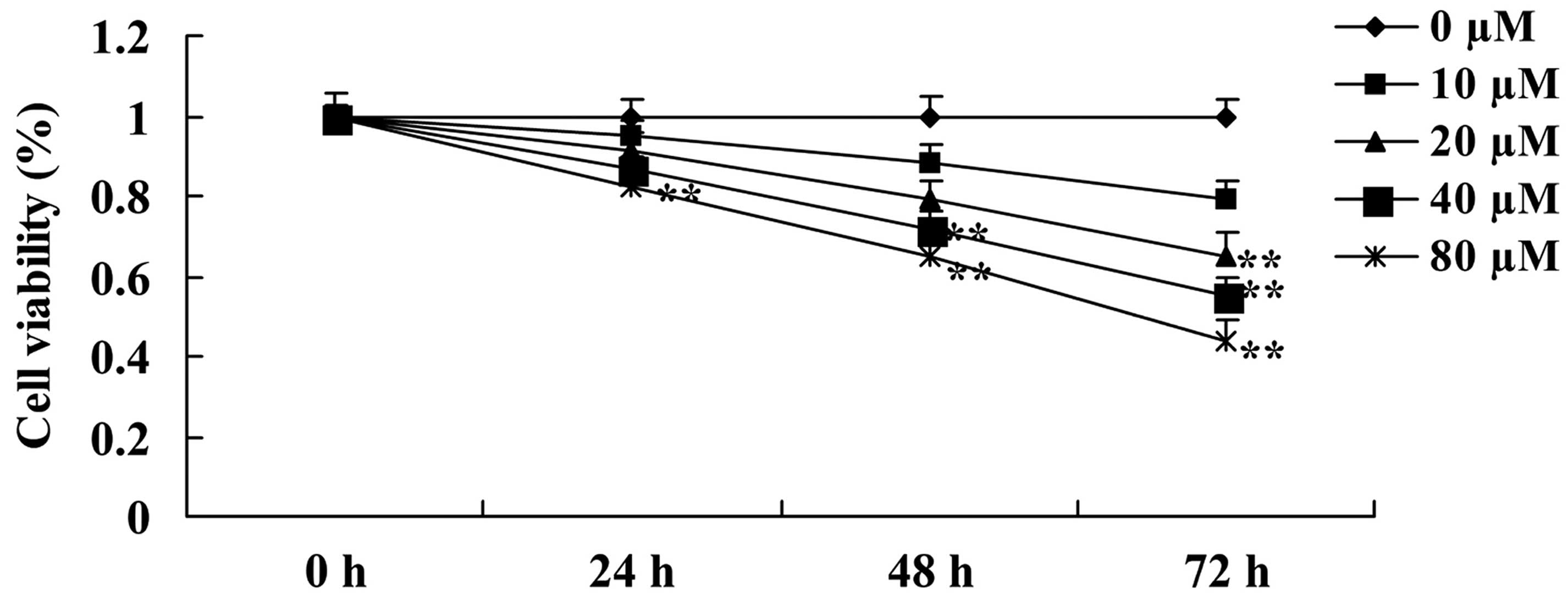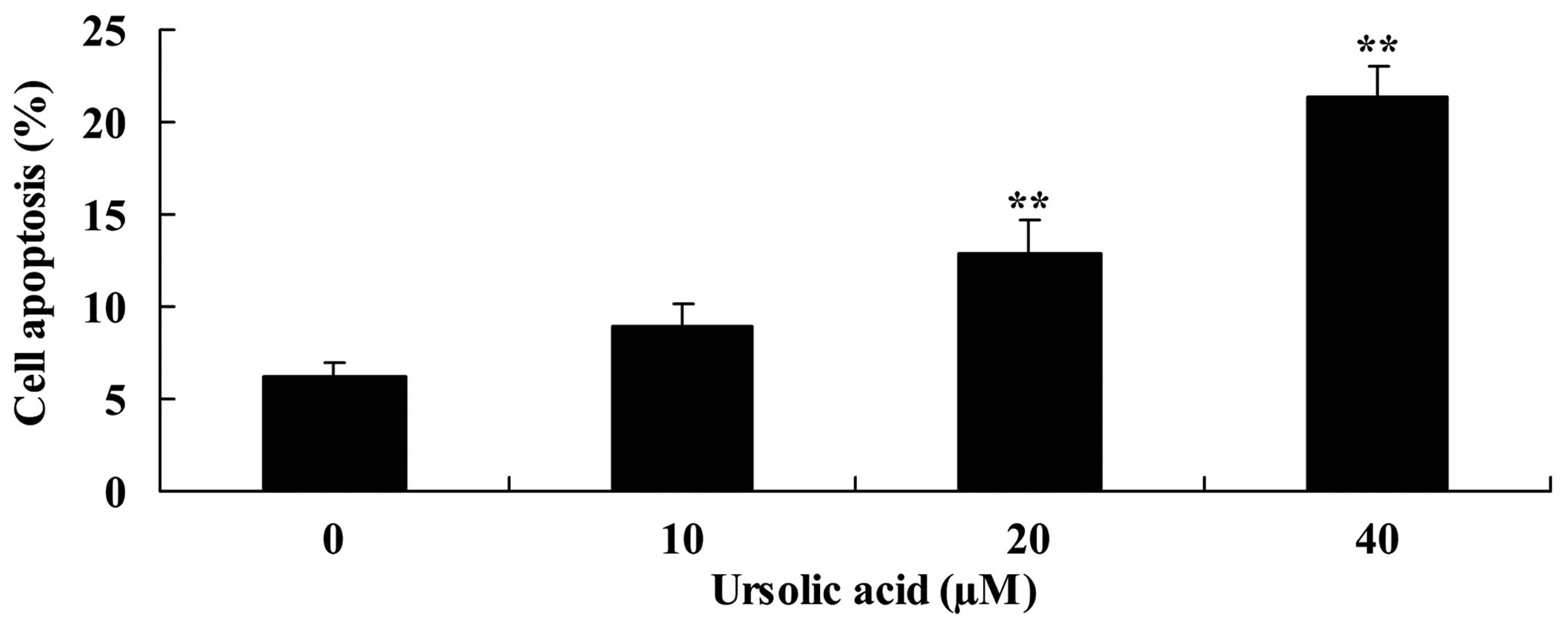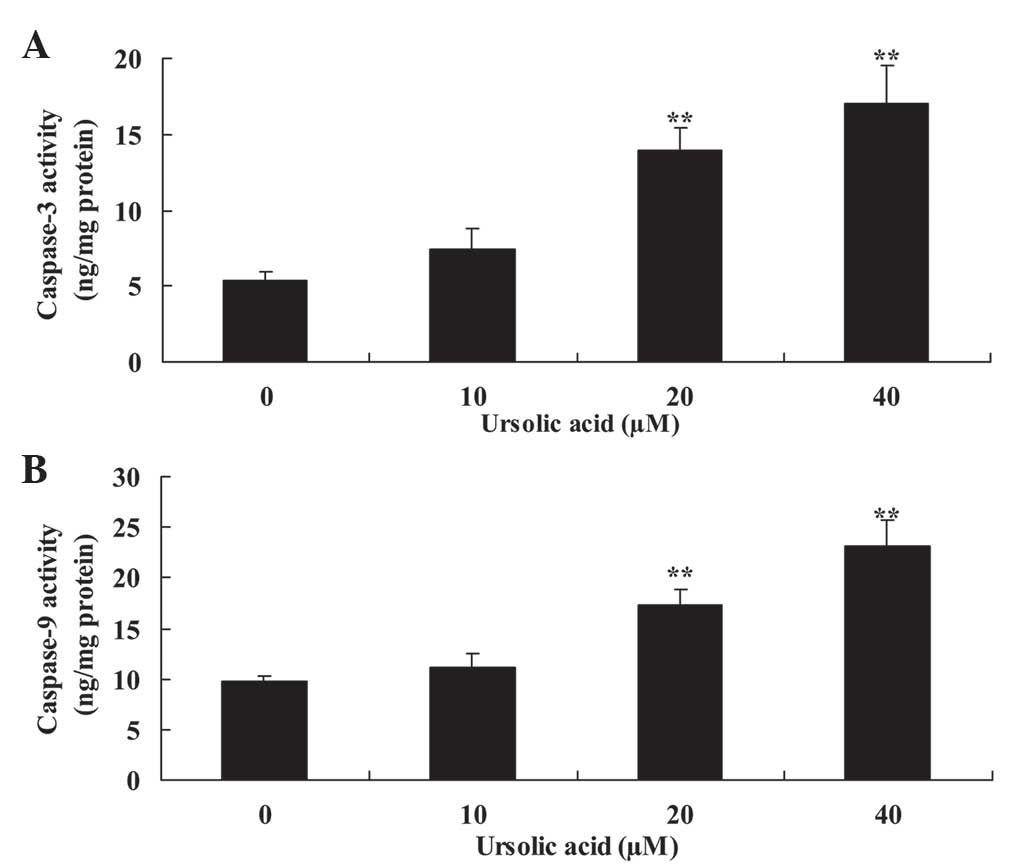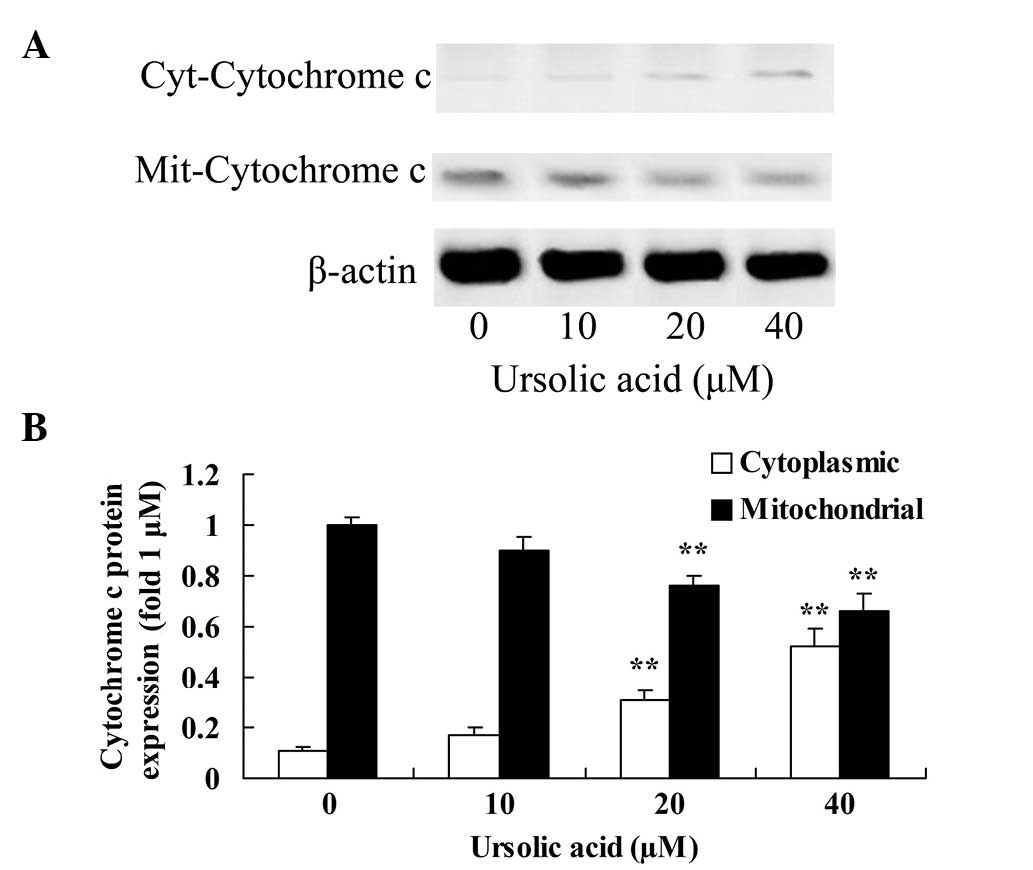|
1
|
Dossus L, Kaaks R, Canzian F, Albanes D,
Berndt SI, Boeing H, Buring J, Chanock SJ, Clavel-Chapelon F,
Feigelson HS, et al: PTGS2 and IL6 genetic variation and risk of
breast and prostate cancer: Results from the Breast and Prostate
Cancer Cohort Consortium (BPC3). Carcinogenesis. 31:455–461. 2010.
View Article : Google Scholar : PubMed/NCBI
|
|
2
|
Jiang J, Yu L, Huang X, Chen X, Li D,
Zhang Y, Tang L and Zhao S: Identification of two novel human
dynein light chain genes, DNLC2A and DNLC2B, and their expression
changes in hepatocellular carcinoma tissues from 68 Chinese
patients. Gene. 281:103–113. 2001. View Article : Google Scholar : PubMed/NCBI
|
|
3
|
Che JP, Li W, Yan Y, Liu M, Wang GC, Li
QY, Yang B, Yao XD and Zheng JH: Expression and clinical
significance of the nin one binding protein and p38 MAPK in
prostate carcinoma. Int J Clin Exp Pathol. 6:2300–2311.
2013.PubMed/NCBI
|
|
4
|
Gao L, Wang XD, Niu YY, Duan DD, Yang X,
Hao J, Zhu CH, Chen D, Wang KX, Qin XM and Wu XZ: Molecular targets
of Chinese herbs: A clinical study of hepatoma based on network
pharmacology. Sci Rep. 6:249442016. View Article : Google Scholar : PubMed/NCBI
|
|
5
|
Yen HR, Chen YY, Huang TP, Chang TT, Tsao
JY, Chen BC and Sun MF: Prescription patterns of Chinese herbal
products for patients with uterine fibroid in Taiwan: A nationwide
population-based study. J Ethnopharmacol. 171:223–230. 2015.
View Article : Google Scholar : PubMed/NCBI
|
|
6
|
Su M, Wu X, Chung HY, Li Y and Ye W:
Antiproliferative activities of five Chinese medicinal herbs and
active compounds in Elephantopus scaber. Nat Prod Commun.
4:1025–1030. 2009.PubMed/NCBI
|
|
7
|
Hsieh TC, Lu X, Guo J, Xiong W, Kunicki J,
Darzynkiewicz Z and Wu JM: Effects of herbal preparation Equiguard
on hormone-responsive and hormone-refractory prostate carcinoma
cells: Mechanistic studies. Int J Oncol. 20:681–689.
2002.PubMed/NCBI
|
|
8
|
Gui Y, Qiu X, Xu Y, Li D and Wang L:
Bu-Shen-Ning-Xin decoction suppresses osteoclastogenesis via
increasing dehydroepiandrosterone to prevent postmenopausal
osteoporosis. Biosci Trends. 9:169–181. 2015. View Article : Google Scholar : PubMed/NCBI
|
|
9
|
Jenny M, Wondrak A, Zvetkova E, Nguyen
Thi, Ngoc Tram, Phi PT, Schennach H, Culig Z, Ueberall F and Fuchsl
D: Crinum Latifolium leave extracts suppress immune activation
cascades in peripheral blood mononuclear cells and proliferation of
prostate tumor cells. Sci Pharm. 79:323–335. 2011. View Article : Google Scholar : PubMed/NCBI
|
|
10
|
Lin YH, Chen KK and Chiu JH: Prevalence,
patterns and costs of Chinese medicine use among prostate cancer
patients: A population-based study in Taiwan. Integr Cancer Ther.
9:16–23. 2010. View Article : Google Scholar : PubMed/NCBI
|
|
11
|
Zhang WB, Wang GJ and Fuxe K: Classic and
modern meridian studies: A review of low hydraulic resistance
channels along meridians and their relevance for therapeutic
effects in Traditional Chinese Medicine. Evid Based Complement
Alternat Med. 2015:4109792015. View Article : Google Scholar : PubMed/NCBI
|
|
12
|
Li N, Ma Z, Li M, Xing Y and Hou Y:
Natural potential therapeutic agents of neurodegenerative diseases
from the traditional herbal medicine Chinese dragon's blood. J
Ethnopharmacol. 152:508–521. 2014. View Article : Google Scholar : PubMed/NCBI
|
|
13
|
Chen J, Wong HS and Ko KM: Ursolic
acid-enriched herba cynomorii extract induces mitochondrial
uncoupling and glutathione redox cycling through mitochondrial
reactive oxygen species generation: Protection against menadione
cytotoxicity in h9c2 cells. Molecules. 19:1576–1591. 2014.
View Article : Google Scholar : PubMed/NCBI
|
|
14
|
Liao Q, Yang W, Jia Y, Chen X, Gao Q and
Bi K: LC-MS determination and pharmacokinetic studies of ursolic
acid in rat plasma after administration of the traditional chinese
medicinal preparation Lu-Ying extract. Yakugaku Zasshi.
125:509–515. 2005. View Article : Google Scholar : PubMed/NCBI
|
|
15
|
Gao N, Cheng S, Budhraja A, Gao Z, Chen J,
Liu EH, Huang C, Chen D, Yang Z, Liu Q, et al: Ursolic acid induces
apoptosis in human leukaemia cells and exhibits anti-leukaemic
activity in nude mice through the PKB pathway. Br J Pharmacol.
165:1813–1826. 2012. View Article : Google Scholar : PubMed/NCBI
|
|
16
|
Yie Y, Zhao S, Tang Q, Zheng F, Wu J, Yang
L, Deng S and Hann SS: Ursolic acid inhibited growth of
hepatocellular carcinoma HepG2 cells through AMPKα-mediated
reduction of DNA methyltransferase 1. Mol Cell Biochem. 402:63–74.
2015. View Article : Google Scholar : PubMed/NCBI
|
|
17
|
Huang L, Chen T, Ye Z and Chen G: Use of
liquid chromatography-atmospheric pressure chemical ionization-ion
trap mass spectrometry for identification of oleanolic acid and
ursolic acid in Anoectochilus roxburghii (wall.) Lindl. J Mass
Spectrom. 42:910–917. 2007. View
Article : Google Scholar : PubMed/NCBI
|
|
18
|
Chang CY, Leu JD and Lee YJ: The actin
depolymerizing factor (ADF)/cofilin signaling pathway and DNA
damage responses in cancer. Int J Mol Sci. 16:4095–4120. 2015.
View Article : Google Scholar : PubMed/NCBI
|
|
19
|
Li GB, Cheng Q, Liu L, Zhou T, Shan CY, Hu
XY, Zhou J, Liu EH, Li P and Gao N: Mitochondrial translocation of
cofilin is required for allyl isothiocyanate-mediated cell death
via ROCK1/PTEN/PI3K signaling pathway. Cell Commun Signal.
11:502013. View Article : Google Scholar : PubMed/NCBI
|
|
20
|
Vitolo MI, Boggs AE, Whipple RA, Yoon JR,
Thompson K, Matrone MA, Cho EH, Balzer EM and Martin SS: Loss of
PTEN induces microtentacles through PI3K-independent activation of
cofilin. Oncogene. 32:2200–2210. 2013. View Article : Google Scholar : PubMed/NCBI
|
|
21
|
Klotz L, Boccon-Gibod L, Shore ND, Andreou
C, Persson BE, Cantor P, Jensen JK, Olesen TK and Schröder FH: The
efficacy and safety of degarelix: A 12-month, comparative,
randomized, open-label, parallel-group phase III study in patients
with prostate cancer. BJU Int. 102:1531–1538. 2008. View Article : Google Scholar : PubMed/NCBI
|
|
22
|
Kim JH, Kim YH, Song GY, Kim DE, Jeong YJ,
Liu KH, Chung YH and Oh S: Ursolic acid and its natural derivative
corosolic acid suppress the proliferation of APC-mutated colon
cancer cells through promotion of β-catenin degradation. Food Chem
Toxicol. 67:87–95. 2014. View Article : Google Scholar : PubMed/NCBI
|
|
23
|
Deng L, Zhang R, Tang F, Li C, Xing YY and
Xi T: Ursolic acid induces U937 cells differentiation by PI3K/Akt
pathway activation. Chin J Nat Med. 12:15–19. 2014.PubMed/NCBI
|
|
24
|
Wang W, Zhao C, Jou D, Lü J, Zhang C, Lin
L and Lin J: Ursolic acid inhibits the growth of colon
cancer-initiating cells by targeting STAT3. Anticancer Res.
33:4279–4284. 2013.PubMed/NCBI
|
|
25
|
Li R, Wang X, Zhang XH, Chen HH and Liu
YD: Ursolic acid promotes apoptosis of SGC-7901 gastric cancer
cells through ROCK/PTEN mediated mitochondrial translocation of
cofilin-1. Asian Pac J Cancer Prev. 15:9593–9597. 2014. View Article : Google Scholar : PubMed/NCBI
|
|
26
|
Yang YZ, Fan TT, Gao F, Fu J and Liu Q:
Exogenous cytochrome c inhibits the expression of transforming
growth factor-β1 in a mouse model of sepsis-induced myocardial
dysfunction via the SMAD1/5/8 signaling pathway. Mol Med Rep.
12:2189–2196. 2015.PubMed/NCBI
|
|
27
|
Faizi M, Salimi A, Rasoulzadeh M,
Naserzadeh P and Pourahmad J: Schizophrenia induces oxidative
stress and cytochrome C release in isolated rat brain mitochondria:
A possible pathway for induction of apoptosis and
neurodegeneration. Iran J Pharm Res. 13(Suppl): S93–S100. 2014.
|
|
28
|
Katoch B, Sebastian S, Sahdev S, Padh H,
Hasnain SE and Begum R: Programmed cell death and its clinical
implications. Indian J Exp Biol. 40:513–524. 2002.PubMed/NCBI
|
|
29
|
Achiwa Y, Hasegawa K, Komiya T and Udagawa
Y: Ursolic acid induces Bax-dependent apoptosis through the
caspase-3 pathway in endometrial cancer SNG-II cells. Oncol Rep.
13:51–57. 2005.PubMed/NCBI
|
|
30
|
Mikelis CM, Simaan M, Ando K, Fukuhara S,
Sakurai A, Amornphimoltham P, Masedunskas A, Weigert R, Chavakis T,
Adams RH, et al: RhoA and ROCK mediate histamine-induced vascular
leakage and anaphylactic shock. Nat Commun. 6:67252015. View Article : Google Scholar : PubMed/NCBI
|
|
31
|
Li G, Liu L, Shan C, Cheng Q, Budhraja A,
Zhou T, Cui H and Gao N: RhoA/ROCK/PTEN signaling is involved in
AT-101-mediated apoptosis in human leukemia cells in vitro and in
vivo. Cell Death Dis. 5:e9982014. View Article : Google Scholar : PubMed/NCBI
|
|
32
|
Wang Y, Kuramitsu Y, Ueno T, Suzuki N,
Yoshino S, Iizuka N, Zhang X, Oka M and Nakamura K: Differential
expression of up-regulated cofilin-1 and down-regulated cofilin-2
characteristic of pancreatic cancer tissues. Oncol Rep.
26:1595–1599. 2011.PubMed/NCBI
|
|
33
|
Yan H, Yang K, Xiao H, Zou YJ, Zhang WB
and Liu HY: Over-expression of cofilin-1 and phosphoglycerate
kinase 1 in astrocytomas involved in pathogenesis of
radioresistance. CNS Neurosci Ther. 18:729–736. 2012. View Article : Google Scholar : PubMed/NCBI
|
|
34
|
Tang Q, Ji Q, Tang Y, Chen T, Pan G, Hu S,
Bao Y, Peng W and Yin P: Mitochondrial translocation of cofilin-1
promotes apoptosis of gastric cancer BGC-823 cells induced by
ursolic acid. Tumour Biol. 35:2451–2459. 2014. View Article : Google Scholar : PubMed/NCBI
|



